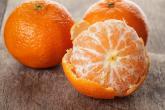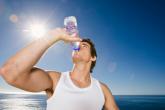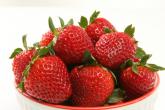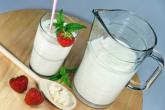Introduction
Classification
Food sources of cholesterol - chart
Interpreting of cholesterol numbers
Combating high cholesterol
Introduction
Just at the beginning of the 20th century the link between circulatory system diseases and cholesterol was discovered. Increased concentration of "bad" cholesterol and free triglycerides in blood plasma belongs to the most important factors of arteriosclerosis hazard. When blood freely flows through blood vessels, together with it nutritious substances and essential to life oxygen are provided to every single cell. In blood also circulate compounds which may damage our arteries from inside (e.g. free radicals). Formed in this way damages cause that in these places fatty substances (mainly cholesterol) and thrombocytes begin to settle. Banks, which obstruct blood flow to many organs, are formed. In that way little and little oxygen reaches organs and progressive hypoxemia of organs leads to their insufficiency. Usually narrowing does not cover all arteries, it occurs in particular sections. Most frequently it concerns coronary arteries which conduct blood to heart. But one should remember cholesterol is also a forerunner of many important, essential for right organism functioning compounds which are sex hormones, hormones of adrenal cortex, vitamin D, gall acids.
Classification
HDL -
"good cholesterol"
Lipoproteins of high density.
HDL contains approximately 55% protein, 3-15% triglycerides,
26-46% phospholipids, 15-30% cholesteryl esters, and 2-10% cholesterol. High density lipoproteins are the smallest of the lipoproteins. HDL particles have a size of
6-12.5 nanometers and a density of ~1.12. They decrease the total level of cholesterol in blood by its transport to liver, where it is expelled - that is why they act positively, slowing down the growth of vessel arteriosclerosis. HDL
(High Density Lipoproteins) collects redundant cholesterol and carries it back to liver to be processed by organism. It can also remove cholesterol accumulated in arteries what means arteriosclerosis moving back.
LDL -
"bad
cholesterol"
Lipoproteins of low density. LDL contains 20-22% protein, 10-15% triglycerides, 20-28% phospholipids, 37-48% cholesteryl esters,
and 8-10% cholesterol. Low density lipoproteins are smaller than IDL, approximately 26 nanometers, and have a density of ~1.04. They increase cholesterol level in blood by its transport from liver to tissues - that is why they accelerate the grow of arteriosclerosis. Higher LDL
(Low Density Lipoproteins) cholesterol level increases heart disease hazard because this form of cholesterol settles on arterial walls. To reduce the level of this fraction one should limit the consumption of saturated fatty acids and trans isomers (products originated from animals e.g. meat, butter, full fat milk, hydrogenated margarines, pastries, French fries, chips), increase consumption of food containing soluble fiber, keep the right body mass.
IDL
Lipoproteins of intermediate density. These kind of lipoproteins are smaller than VLDL, approximately 40 nanometers, and
have a density of ~1.0. Their function is
to transport endogenous fats and cholesterol from liver to tissues.
IDLs are composed of 10-12% protein, 24-30% triglycerides, 25-27% phospholipids, 32-35% cholesteryl esters
and 8-10% cholesterol. IDLs are derived from VLDL by triglyceride depletion
and therefore contain the same apolipoproteins as VLDL.
IDL becomes LDL as its triglycerides are transferred to the cells.
VLDL
Lipoproteins of very low density. Very low density lipoproteins are approximately 25-90 nanometers in size, and have a density of ~0.98. Their function is
to transport endogenous fats and cholesterol from liver to tissues. VLDL contains 5-12% protein, 50-55% triglycerides, 18-20% phospholipids, 12-15% cholesteryl esters
and 8-10% cholesterol. VLDL also acquires several apolipoproteins from plasma HDL and
is a source of triglycerides for the cells.
Chylomicrons
Chylomicrons are the largest and least dense of the lipoproteins. These
1000-nanometer in size, and have a density of less than
0.95. Their function is
to transport dietary fats and
cholesterol from intestines to tissues. Chylomicrons contain about 1-2% protein, 85-88%
triglycerides, ~8% phospholipids, ~3% cholesteryl esters and ~1% cholesterol.
The lymphatic system transports chylomicrons to the plasma where they
acquire additional apolipoproteins from HDL. Triglycerides contained in
chylomicrons are hydrolyzed in the tissues and the particle remnants are
processed by the liver.
Food sources of cholesterol - chart
Dietary
cholesterol is found only in foods derived from animals (meat, fish,
poultry, eggs and dairy products), it is not present in plants. Too high "bad cholesterol" content in a diet may increase the level of this ingredient in blood serum, although some people possess increased "combustion" of cholesterol coming from food of animal origin. For the rest one of protective action is limitation of daily cholesterol consumption.
The
safe range of cholesterol intake is: 200-400 milligrams per day.
| Product | Cholesterol per 100 grams [g] of food in milligrams [mg] |
|---|---|
| beef / veal brain, raw | 3100 |
| egg, yolk, dried | 2335 |
| egg, whole, dried | 1715 |
| egg, yolk, raw, fresh | 1234 |
| egg, turkey, whole, fresh, raw | 933 |
| egg, duck, whole, fresh, raw | 884 |
| egg, goose, whole, fresh, raw | 852 |
| egg, quail, whole, fresh, raw | 844 |
| herring fish oil, raw | 766 |
| sardine fish oil, raw | 710 |
| caviar, raw | 588 |
| cod liver fish oil, raw | 570 |
| menhaden fish oil, raw | 521 |
| duck liver, raw | 515 |
| salmon fish oil, raw | 485 |
| roe, raw | 479 |
| egg, whole, fresh, raw | 372 |
| egg, whole, cooked, scrambled | 352 |
| lamb kidney, raw | 337 |
| turkey liver, raw | 331 |
| pork liver, raw | 301 |
| clarified butter, Ghee | 256 |
| squid, mixed species, raw | 233 |
| butter without salt | 215 |
| butter salted | 215 |
| sponge cake | 170 |
| shrimp, mixed species, raw | 152 |
| pate | 150 |
| turkey heart, raw | 147 |
| heavy whipping cream | 137 |
| eel, mixed species, raw | 126 |
| blood sausage | 120 |
| butter cookies | 117 |
| gouda cheese | 114 |
| crayfish, mixed species, wild, raw | 114 |
| light whipping cream (30-36% fat) | 111 |
| cream cheese | 110 |
| fat, beef tallow | 109 |
| yellow cheese | 108 |
| butter cookies | 117 |
| pepperoni, pork and beef | 105 |
| cheddar cheese | 105 |
| turkey fat | 102 |
| mutton tallow fat | 102 |
| duck fat | 100 |
| goose fat | 100 |
| brie cheese | 100 |
| lobster, northern, raw | 95 |
| swiss cheese | 92 |
| vanilla ice creams | 92 |
| lard | 95 |
| goose, all classes, meat and skin, raw, average | 91 |
| roquefort cheese | 90 |
| limburger cheese | 90 |
| perch, mixed species, raw | 90 |
| feta cheese | 89 |
| edam cheese | 89 |
| margarine-like, butter-margarine blend, 80% fat, stick, without salt | 88 |
| pike, walleye, raw | 86 |
| chicken fat | 85 |
| salami, Italian, pork | 80 |
| goat cheese, semisoft type | 79 |
| blue crab, raw | 78 |
| duck, all classes, meat and skin, raw, average | 77 |
| herring, Pacific, raw | 77 |
| quail, all classes, meat and skin, raw, average | 71 |
| pressurized whipped cream | 76 |
| chicken, broilers or fryers, meat and skin, raw, average | 75 |
| blue cheese | 75 |
| beef, all classes, meat, raw, average | 72 |
| camembert cheese | 72 |
| pork sausage, fresh, raw | 72 |
| pollock, Atlantic, raw | 71 |
| pheasant, raw, meat and skin, average | 71 |
| pollock, walleye, raw | 71 |
| mackerel, Atlantic, raw | 70 |
| fish, all classes, meat and skin, raw, average | 70 |
| pork, all classes, meat, raw, average | 70 |
| ham, minced | 70 |
| turkey, all classes, meat and skin, raw, average | 68 |
| parmesan cheese | 68 |
| croissants, butter | 67 |
| frankfurter sausage, pork | 66 |
| light cream (18% fat) | 66 |
| butterfish, raw | 65 |
| mozzarella cheese | 64 |
| salmon, sockeye, raw | 62 |
| beerwurst, pork and beef | 62 |
| anchovy, european, raw | 60 |
| knackwurst, knockwurst, pork and beef | 60 |
| chocolate ice creams | 60 |
| sturgeon, mixed species, raw | 60 |
| burbot, raw | 60 |
| trout, mixed species, raw | 58 |
| catfish, channel, wild, raw | 58 |
| buttermilk pancakes | 58 |
| haddock, raw | 57 |
| cheese croissants | 57 |
| salmon, Atlantic, wild, raw | 55 |
| crab, queen, raw | 55 |
| oyster, eastern, wild, raw | 53 |
| sour cream, cultured (20% fat) | 52 |
| ricotta cream, whole milk | 51 |
| custard | 51 |
| vanilla wafers | 51 |
| sheepshead, raw | 50 |
| snail, raw | 50 |
| tilefish, raw | 50 |
| frog legs, raw | 50 |
| tilapia, raw | 50 |
| pompano, florida, raw | 50 |
| oyster, Pacific, raw | 50 |
| sablefish, raw | 49 |
| flatfish (flounder and sole species), raw | 48 |
| octopus, common, raw | 48 |
| halibut, Greenland, raw | 46 |
| Berliner sausage, pork and beef | 46 |
| lemon meringue pie | 45 |
| cod, Atlantic, raw | 43 |
| swordfish, raw | 39 |
| tuna, fresh, bluefin, raw | 38 |
| snapper, mixed species, raw | 37 |
| cod, Pacific, raw | 37 |
| sour cream, light | 35 |
| scallop, mixed species, raw | 33 |
| canned milk, condensed, sweetened | 33 |
| gingerbread | 32 |
| apple croissants | 31 |
| evaporated milk | 29 |
| blue mussel, raw | 28 |
| sheep milk | 27 |
| pumpkin pie | 26 |
| margarine-like spread | 23 |
| salmon, chinook, smoked | 23 |
| milk chocolate | 23 |
| white chocolate | 21 |
| doughnuts, cake-type, plain, chocolate-coated or frosted | 19 |
| chocolate milk with almonds | 19 |
| semisweet chocolate | 18 |
| brownies cookies | 17 |
| cottage cheese (4% fat) | 15 |
| Snickers bar | 13 |
| milk crackers | 11 |
| Kit Kat wafer bar | 11 |
| Mily way bar | 9 |
| sour cream, fat free | 9 |
| greek yoghurt | 9 |
| Snickers cruncher | 9 |
| dark chocolate, 45-59% cacao | 8 |
| M&M's peanut chocolate candies | 8 |
| Twix caramel cookie bars | 7 |
| low fat fruit yoghurt | 6 |
| apple strudel | 6 |
| dried whey | 6 |
| dark chocolate, 60-69% cacao | 6 |
| milk (1% fat) | 5 |
| low fat vanilla yoghurt | 5 |
| Musketeers bar | 5 |
| skimmed milk | 4 |
| dark chocolate, 70-85% cacao | 3 |
| milk chocolate coated raisins | 3 |
| skimmed milk yoghurt | 2 |
| buttermilk biscuits | 1 |
| chocolate yoghurt, nonfat milk | 1 |
Interpreting of cholesterol numbers
The right concentration in blood of the
adults:
-
Total cholesterol [mg/dl]
desirable: below 200
borderline: 201-239
undesirable: 240 and above -
LDL cholesterol ("bad cholesterol") [mg/dl]
desirable: below 130
borderline: 131-159
undesirable: 160 and above -
HDL cholesterol ("good cholesterol") [mg/dl]
desirable: above 45
borderline: 41-45
undesirable: below 40 -
Triglycerides (Tryglicerydes) [mg/dl]
desirable: below 150
borderline: 151-199
undesirable: above 200
Having elevated triglycerides may also increase the risk of heart disease. The same factors like in the case of cholesterol (exercises, a good diet, and correct weight) can decrease triglycerides.
Combating high cholesterol
Many
factors such as genetics, weight, lack of activity (exercises) and poor
diet contribute to high cholesterol. Understanding how these factors affect your
cholesterol is important in the prevention and treatment of high
cholesterol.
Genetics
Just as some people inherit physical characteristics from their parents,
others inherit an increased likelihood of developing high cholesterol. If
you have a family history of heart disease or high cholesterol, it is
important to focus on those aspects which you can control rather than
feeling genetically doomed. By maintaining a healthy weight, exercising
regularly and eating a low-fat, well-balanced diet you will decrease your
chances of developing heart disease.
Weight
Accumulating excess weight is generally associated with increased total
and LDL cholesterol. Every individual responds differently to weight loss,
however most people find that blood cholesterol drops as weight decreases.
The best way to lose weight and lower cholesterol is through increased
activity coupled with low-fat eating.
Exercise
Exercise is very important in controlling cholesterol levels. Not only
does total and LDL cholesterol tend to decrease with activity, but HDL
cholesterol increases. In order to get this effect "aerobic"
activity is best. Aerobic exercise is any exercise that is continuous,
rhythmical and involves large muscle groups. Most aerobic exercise end
with the letter "ing" (walking, running, rowing, cycling,
swimming, rope skipping, dancing, hiking, and skating). The cholesterol
lowering effect of exercise is greatest when individuals exercise at least
3 times per week for 30 minutes or more.
Diet
Diet is also a major component of decreasing blood cholesterol. A proper
diet can help lower cholesterol for several reasons. Diet modifications
are essential for weight loss but can effect cholesterol levels even if
weight remains unchanged. Also, a proper diet is essential to provide
energy for those engaging in daily aerobic exercise. Fat is often targeted
as the main dietary factor which affects blood cholesterol. Fat serves
many functions in the body therefore, a fat free diet is not a healthy
diet. However, the amount and type of fat in the diet is important in
controlling cholesterol. Other dietary suggestions
-
dietary fiber binds cholesterol and can help in cholesterol reduction. Choosing whole grain products (bran cereal, whole wheat bread) as well as fresh fruits and vegetables will increase dietary fiber intake,
-
read food labels. Food labels are required to list ingredients as well as the amount of fat, saturated fat and cholesterol in the food. Reading food labels will allow you to choose heart healthy foods,
-
select protein sources from: fish which contains omega-3 fatty acids and can be helpful in reducing the risk of heart disease lean cuts of meat (trim visible fats and look for little marbling), skinless poultry, cooked dry beans and legumes, eggs (limit 3-4 per week).
In case of increased cholesterol and triglyceride concentration in blood the application of efficient low - cholesterol diet is important.
|
|
|

















